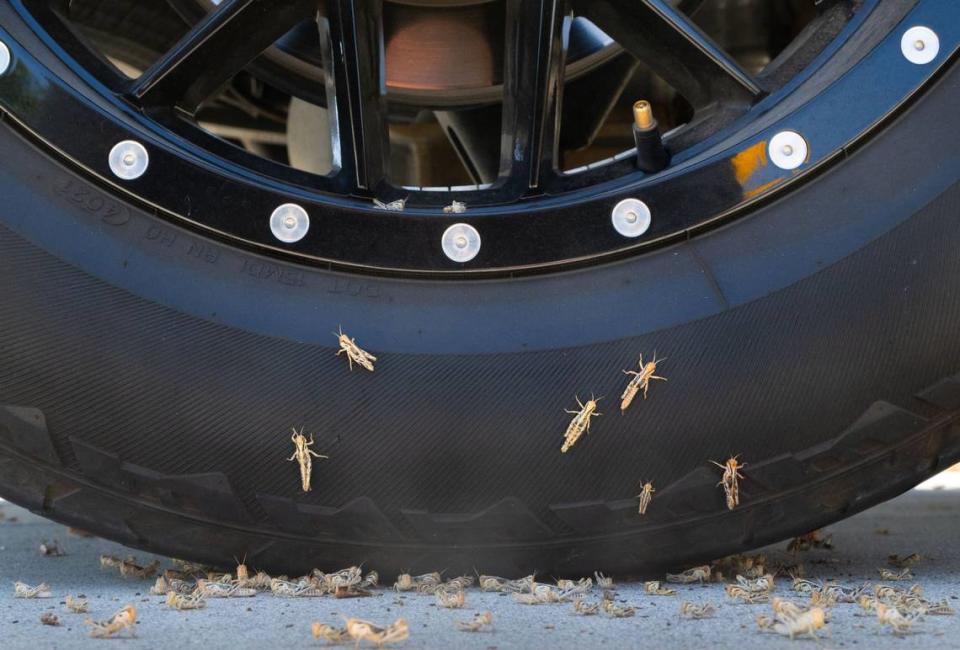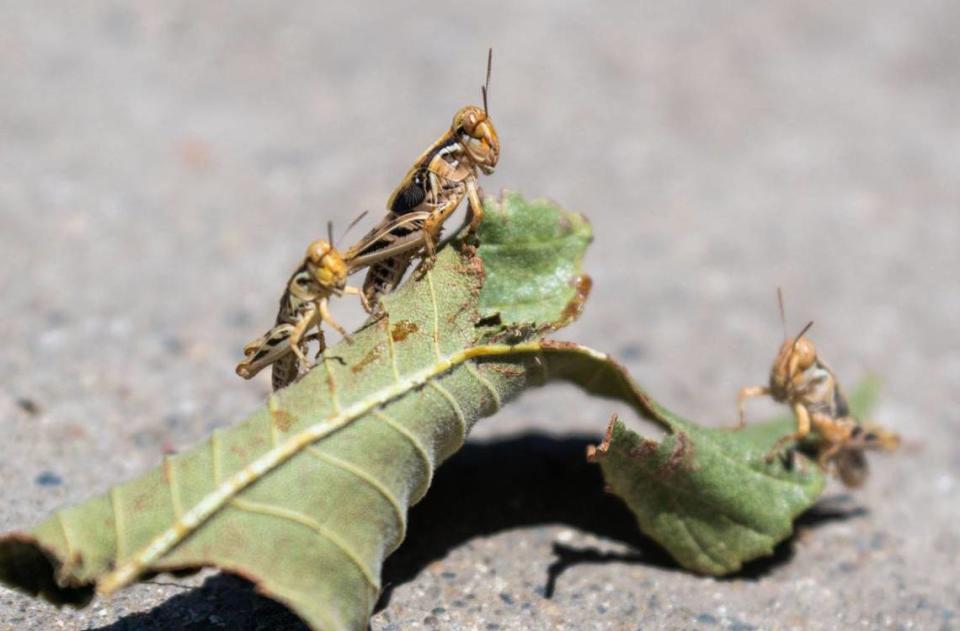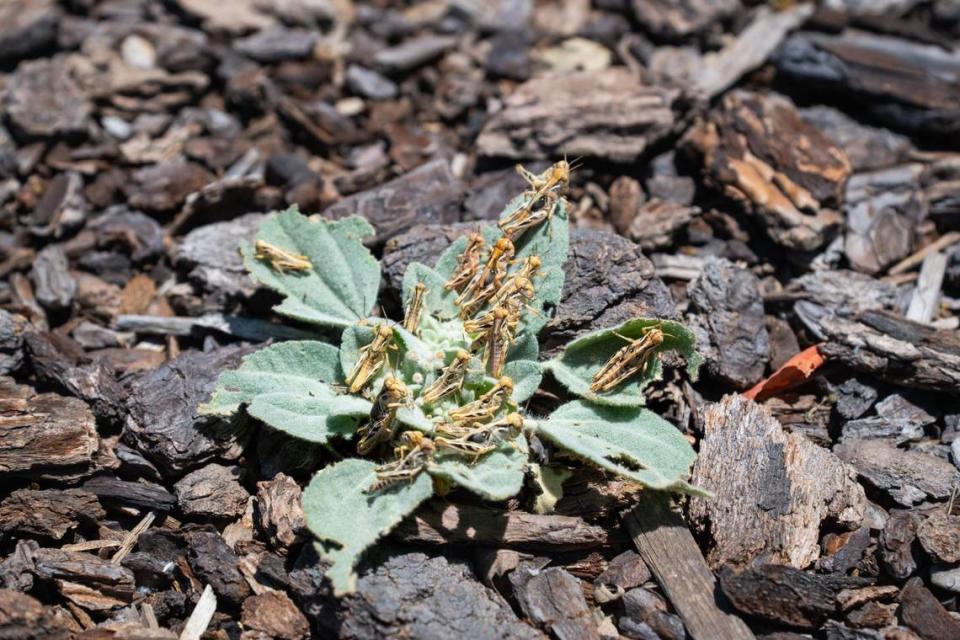Grasshoppers inundating the Sacramento area this summer. Here’s where and why
An infestation of grasshoppers have disrupted residents and destroyed gardens in the Sacramento Valley and Sierra foothills of Nothern California, with Sacramento, El Dorado and Placer counties all noticing an uptick in insect activity this summer.
Placer County officials reported “unusual grasshopper activity” in early June and identified western Placer and the cities of Roseville and Lincoln as hot spots for the insects.
The county said grasshoppers tend to jump into neighborhoods and eat landscape plants and gardens when wild food becomes scarce. These kinds of severe grasshopper swarms typically occur once a decade and can last up to two years, the county alerted residents in a news release.
“In most years, these grasshoppers go unnoticed, but when conditions are favorable such as warm, moist springs when abundant food is produced, populations may increase dramatically,” the news release said.
El Dorado County’s Agricultural Commission has also fielded increased reports and complaints about hordes of grasshoppers this summer, “but there’s not much that can be done,” a spokesperson said.
Jesse McKinnon, the pest control manager at Defender Termite & Pest Management, which serves the Sacramento region, said he started receiving more calls regarding grasshopper damage around a month ago.
“We’ve seen that they’re just slowly migrating up from the fields and a lot of the orchards in the farmland down south in the central valley,” he said. “The wind, also the conditions with the heat, they’re just kind of starting to get pushed up in our direction”
McKinnon said the infestation is much worse than previous years, with most requests for service occurring in the south Sacramento area, particularly in Rancho Cordova and down the Highway 50 corridor.
“We have had quite a bit of activity. It will be really, really strong for a few days. And then we won’t hear about it for a few days. And then we’ll start getting calls again. So it sounds like they’re going in some type of pattern.”

The Sacramento County Department of Agriculture agreed that grasshopper infestations were an issue this summer, but said that they had not heard widespread frustration from residents or growers in the area.
“We received some feedback, but nothing that rose to the level of it being overly alarming,” said Kevin Martyn, the county’s deputy agricultural commissioner.
The department took action following the outbreak by surveying, collecting grasshopper samples and analyzing data. They ultimately determined the grasshoppers were not an invasive species, but the common Melanoplus genus, which are native to the Western United States.
What to know about the grasshoppers invading the area
Melanoplus are large, short-horned grasshoppers. The leaping insects are green, olive, tan and brown, which helps them camouflage, according to the Missouri Department of Conservation. They measure about a half-inch to an inch long, although some specimens can get up to 3 inches in length.
The grasshoppers eat lettuce, beans, corn, carrots, onions and some annual flowers, the Place County news release said. However, the bugs tend to leave tomatoes and squash alone.

Ways to stop grasshoppers from destroying your property
Melanoplus grasshoppers are among the most widespread and destructive of their kind, as well as some of the most challenging pests to get rid of in a garden, according to the University of California Agriculture and Natural Resources.
The best time to apply insecticides is when newborn grasshoppers are in fields and have not yet migrated to gardens, university researchers said. Insecticides are usually useless against grasshoppers once they reach neighborhoods.
“Unfortunately, once large numbers of grasshoppers are present in residential landscaping, control options are very limited,” Placer County officials said in a news release.
However, residents can try a few things to stop grasshoppers from devouring their gardens or yards:
Protect individual plants by covering them with screens or cloth.
Screen your most desirable plants and leave other plants for grasshoppers to eat.
Manually remove insects by raking or sweeping, bagging the bugs for disposal.
Try not to over water plants or yards so less insects are attracted to leftover puddles

When will insect infestation end?
The length of grasshopper infestations are difficult to predict. Some outbreaks can last up to two or three years if conditions remain moist and warm.
Placer County officials said there “is no expected time frame” until the swarm of grasshoppers dies down.
But Pest Control Manager Jesse McKinnon said residents may begin to see some relief once colder temperatures hit this autumn.
“That’s when we tend to see a lot of insects, including grasshoppers, just kind of fall off,” he said.

